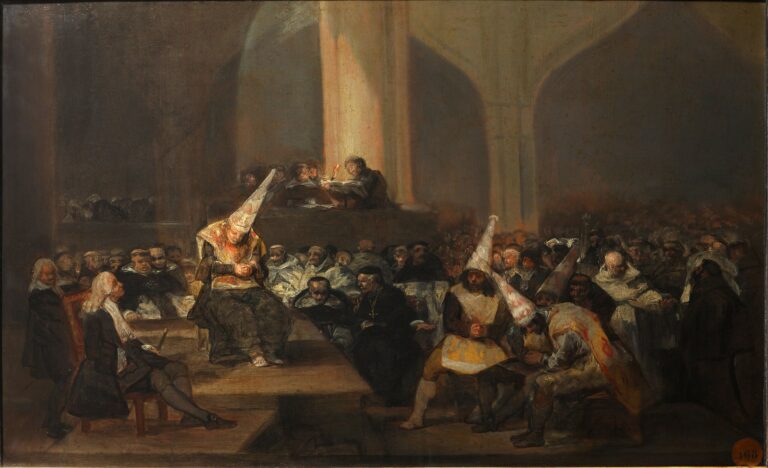
The Illusion of The Repugnant Client: Hindu Ethics in American Legal Practice
Sai Santosh Kumar Kolluru
Hindu Temple in the United States via Wikimedia Commons (CC BY 4.0).
Every Hindu-American lawyer at some point in their career is called to justify their decision to represent certain clients: How can one represent a client they find morally “repugnant” while walking the path of dharma in pursuit of the ultimate goal of human life: liberation (mokṣa), the state of freedom from all sorrow (ātyantika-duḥkha-nivṛtti)? The question strikes at the heart of representing clients whose actions, causes, or character conflict with the Hindu-American lawyer’s moral convictions—clients whom the legal profession characterizes as “repugnant.”
In a Hindu-American Lawyer’s Quest, I concluded that the legal profession serves as an ideal arena for practicing dharma through the Bhagavad-Gītā’s karma-yoga: zealous client representation performed with complete detachment from personal outcomes. This transforms legal practice from mere professional duty into spiritual discipline (sādhana), where advocacy becomes an act of worship. Such practice embodies pravṛtti dharma—engaged worldly duty—as a pathway toward nivṛtti dharma – liberation. Through this synthesis, the Hindu-American lawyer simultaneously fulfills professional obligations while advancing spiritually, using legal work as a vehicle for realizing Brahman—the fundamental Reality underlying existence.
However, this discussion has not yet addressed the fundamental questions of whether a Hindu-American lawyer’s decisions are primarily guided by Hindu religious ethics or by legal professional standards, and whether these two complement or conflict with each other during moral dilemmas. The traditional approach to these dilemmas suggests compartmentalization: maintaining distinct spheres for religious belief and professional duty. However, this solution proves inadequate for Hindu practitioners, whose philosophical tradition recognizes no fundamental separation between the sacred and secular. This article argues that such perceived conflicts rest on a fundamental misapplication of both Hindu philosophy and the nature of legal representation. The solution lies not in compartmentalization, but in recognizing that Hindu philosophy offers a simple resolution to what secular legal ethics has struggled to address satisfactorily.
The Nature of “Repugnance” in Legal Ethics
Contemporary legal scholarship has demonstrated that the concept of “repugnant clients” represents a fundamental analytical failure within legal ethics. The Latin root of repugnance is repugnantem means “contradictory, opposing.” Today, the word “repugnance” is defined by Merriam-Webster Dictionary as synonymous with “aversion, disgust, distaste, horror, loathing, nausea, repulsion, and revulsion.” The word “repugnant” is mentioned in the Model Rules of Professional Conduct (Model Rules) twice: (1) “a lawyer may withdraw from representing a client if . . . the client insists on taking action that the lawyer considers repugnant” (1.16(b)(4)), and (2) allows a lawyer to avoid an appointed representation if “the client or the cause is so repugnant to the lawyer as to be likely to impair the client-lawyer relationship or the lawyer’s ability to represent the client.” (6.2(c)).
Vanessa Kubota’s comprehensive examination reveals that the term “repugnant” as employed in the Model Rules represents a fundamental departure from the word’s objective usage in constitutional law, where it simply means “inconsistent with” or “contrary to.” Kubota’s analysis demonstrates that the repugnancy standard creates an irresolvable logical contradiction. When applied subjectively, the standard becomes arbitrary and potentially discriminatory, permitting lawyers to withdraw from representation based on personal preferences that may mask underlying bias. When applied objectively, it necessarily creates “a class of clients presumptively denied legal support,” fundamentally undermining the constitutional principle of equal justice under law.
In the ethics context, however, the term has evolved to embody “disgust-based morality,” creating what Kubota terms a dangerous precedent that “facilitates systemic racism, antisemitism, transphobia, or any other form of discrimination.” This is particularly problematic because it imports subjective emotional judgments into what should be objective professional decisions. As Kubota demonstrates, whether applied subjectively or objectively, the repugnancy standard fails: “if the standard for repugnance is subjective, it can become arbitrary and self-justifying. If objective, it can drain the lifeblood of the Sixth Amendment.”
In applying the repugnancy provisions in Model Rules, Kubota points out that courts have generally sought to limit lawyers’ abilities to withdraw from a representation by assuring they do not prejudice the client. Courts have been left to this judicial discretion, given that the Model Rules provide neither an internal definition nor a clear, consistent application of its common meaning. Furthermore, the practical consequences of this analytical failure are evident in the inconsistent application across jurisdictions. Several state bars, including California, New York, and the District of Columbia, have recognized these problems and eliminated “repugnant” from their ethical codes. California’s approach proves particularly instructive, focusing on specific, objective impediments to effective representation rather than subjective characterizations of clients.
Kubota’s analysis of “repugnance” supports the Hindu perspective that the concept of inherent repugnance is illusory. Kubota’s research demonstrates that repugnance, as used in legal ethics, functions as what she terms a “floating signifier“—a concept that lacks inherent meaning and acquires significance only through arbitrary social and cultural projections. She notes that “repugnant cannot (and should not) be defined as a term in its own right; therefore, it only bears relational existence and lacks an intrinsic meaning.” This reality aligns precisely with the non-dual (advaitic) understanding that perceived repugnance exists only in the mind (chitta) of the observer (sakshi), not as an inherent quality of the observed.
The Dharma of a Hindu-American Lawyer: Representation of Rights and Liberties
Spiritual teacher Sri M translates the first verse of Patanjali’s Yoga Sūtras: “yoga is defined as ‘yogas chitta vritti nirodha,’ which means yoga is the stopping or the stilling of the ‘vrittis’ of the ‘chitta’. ‘Chitta’ means mind stuff – thoughts”; when this happens, the limited self-identification with the body-mind (“I”) collapses and liberation is achieved. When engaged in worldly duties, yoga is achieved by performing activities (karma) that are dharmic, as they contribute to the stilling of the mind.
Dharma is best defined as “that which sustains” or “that which holds together”—analogous to the inherent sweetness of sugar or the natural heat of fire. From the root dhṛ (“to sustain”), dharma maintains both cosmic and social order. Adi Shankaracharya‘s comments “that which, when followed, leads to both worldly prosperity and ultimate liberation—the means by which actions become purified and transformed from bondage into liberation.” Accordingly, a Hindu-American lawyer’s dharma is in implementing the constitutional right to representation – regardless of personal feelings about clients.
Tchia Shachar’s “consensual moral theory” in “The Ethics of Client Selection” provides powerful support to this Hindu-American lawyer’s dharma. She provides a pragmatic infrastructure upon which the Hindu-American lawyer can integrate the dharmic approach to client selection or representation (in the case of an appointment) whereby, what I term, “karmic neutrality” is achieved as the Hindu-American lawyer embodies a yogi (or yogini) in legal practice.
Under Shachar’s “consensual macro theory” where “although the action of representation essentially compels the lawyer to “become one” with the client, it is in fact “not unification with the client as a person, but rather with the client’s rights and liberties under the law” that liberates the Hindu-American lawyer from the effects of karma (meaning “action,” represents the fundamental law of cause and effect binding individual fate across lifetimes). In other words, when the Hindu-American lawyer chooses a “repugnant” client or an “unpopular” one is appointed, they do not accrue the karma associated with representing that “repugnant person”—a characterization as we will see is philosophically incoherent from a dharmic perspective—so long as their mind on the dharma of the legal profession embodied in the American legal system: the dharma to defend the legal rights and constitutional protections of their client as an extension of the client’s legal personality—their constitutional rights, procedural protections, and statutory entitlements—rather than their moral personality.
By elevating the representation of systemic rights and liberties above personal moral judgments about individual clients, the practitioner walks the path of dharma and transcends the karmic entanglements that would otherwise arise as dvesha, repulsion toward objects, experiences, or people, that binds consciousness as part of a reactive pattern and creates karmic impressions (samskaras) that perpetuate cycles of suffering. The Bhagavad-Gītā provides the precise doctrinal foundation for this approach. Krishna’s instruction to Arjuna establishes the principle of niṣkāma karma: “you have a right to perform your prescribed duty, but not to the fruits of your actions. Never consider yourself the cause of the results of your activities, and never be attached to not doing your duty” (BG 2.47). Applied to legal practice, this teaching reveals that the lawyer’s dharma consists in zealous advocacy within legal and ethical boundaries, performed without attachment to client characteristics or case outcomes.
Krishna further teaches: “better is one’s own dharma, though imperfectly performed, than the dharma of another well performed. Better is death in one’s own dharma; the dharma of another is fraught with danger” (BG 3.35). Arjuna’s dilemma mirrors the lawyer’s dilemma–he doesn’t want to fight his relatives and teachers, just as a lawyer might not want to represent certain clients and not be morally accountable. Krishna teaches that Arjuna’s svadharma as a warrior (kshatriya) requires him to fight, but he must do so without attachment to results and with his heart on the ultimate reality, Brahman. Accordingly, a lawyer’s dharma includes zealous advocacy, competent representation, and upholding justice – regardless of personal feelings about clients.
The Gita’s doctrine of karma yoga further illuminates why this framework generates spiritual liberation rather than bondage. When legal representation is performed as a dharmic duty rather than personal preference, it becomes a form of spiritual practice. As Krishna teaches:
Therefore, without being attached to the fruits of activities, one should act as a matter of duty, for by working without attachment one attains the Supreme (BG 3.19).
While Shachar’s theory helps a Hindu-American lawyer create a dharmic approach to address the ethical dilemma of representing a “repugnant” client, it need not be a “framework that explicitly supports a dichotomy between professional morality and personal and common morality” as she aims for the theory to be. In the Hindu tradition, there is no dividing line between the sacred and secular, particularly the professional and the personal. Dharmic principles, as we have seen, serve both spiritual and professional purposes simultaneously, enabling the practitioner to fulfill professional obligations while advancing along the dharmic path through selfless service. This integration and dissolution of any dichotomy is strengthened by the core tenet of the Hindu faith: all beings have the spark of divinity within them.
Recognizing the Divine Essence in all Beings
The legal profession’s embrace of repugnance as grounds for withdrawal directly contradicts the Hindu understanding that no being can be intrinsically repugnant when viewed through the lens of the ultimate reality.
Hindu scriptural tradition provides comprehensive philosophical support for Shachar’s legal rights and liberties-based approach through its fundamental teachings on the nature of reality and the universal presence of divine consciousness. It also supports Kubota’s observation that when the law imports a standard of repugnance to human representation, “repugnant clients lose their identity, their humanity, and their standing under the law.” This observation proves particularly significant for Hindu-American practitioners, who are called to recognize the divine essence within all beings.
Rather than viewing certain clients as inherently repugnant, a Hindu-American lawyer facing difficult client selection recognizes as part of his faith that all beings possess inherent divine potential, regardless of their current actions or circumstances. This is the vision of Advaita Vedanta, a dominant paradigm of Hindu thought, and it’s eloquently expressed by the late Pujya Swami Dayananda Saraswati: “[all beings], by virtue of their own essential nature, are totally, absolutely, pure and free. Compassion, love, giving, and sharing are all dynamic forms of this absolute happiness (ananda). You are limitless fullness, complete, lacking nothing.” This recognition transforms the attorney-client relationship from one of potential moral judgment to one of sacred service.
The Upanishadic foundation establishes that apparent differences between beings exist only at the phenomenal level, while ultimate reality reveals a universal divine essence. The Isha Upanishad’s declaration mentioned earlier indicates that divine consciousness exists equally in all participants within the legal system. The Chandogya Upanishad‘s mahavakya (the great saying) “Tat tvam asi” (Thou art That) teaches the fundamental identity between individual consciousness and ultimate reality, meaning that both attorney and client share the same essential divine nature.
This philosophical foundation transforms the understanding of the attorney-client relationship. For the Hindu-American lawyer, this means recognizing that what appears as a “repugnant” client is an illusion (maya) based on duality (this and that), when in ultimate reality represents, from the non-dual (advaitic) perspective, none other than the same divine consciousness that resides within the lawyer themselves. The Brihadaranyaka Upanishad‘s teaching “Ayam atma brahma” (This Self is Brahman) establishes that this divine identity transcends surface characteristics and behavioral manifestations.
The Bhagavad Gītā directly addresses the practical implications of this philosophical understanding. Krishna’s teaching that “the humble sages, by virtue of true knowledge, see with equal vision a learned and gentle brahmana, a cow, an elephant, a dog, and a dog-eater” (BG 5.18) explicitly contradicts discrimination based on social status, moral character, or behavioral history. This verse establishes that spiritual maturity manifests as recognition of divine essence in all being, regardless of external circumstances. Krishna further instructs: “the true yogis, uniting their consciousness with God, see with equal eye, all living beings in God and God in all living beings.” (BG 6.29). For the Hindu-American lawyer, this teaching indicates that serving any client’s constitutional rights constitutes service to the divine principle of justice that underlies cosmic order, ṛta.
The Bhagavad Gītā also addresses concerns about maintaining mental equilibrium during challenging representations. Strong aversions, like excessive attachments, disturb the psychological balance necessary for both spiritual development and professional competence. Krishna’s analysis of the progression from attachment to destruction (BG 2.62-63) applies equally to aversion-based responses, demonstrating how emotional reactions compromise competent client representation.
The prescribed solution involves achieving equanimity (samatvam): “Be steadfast in yoga, perform your duty, and abandon all attachment to success or failure. Such evenness of mind is called yoga” (BG 2.48). This teaching provides the practical methodology for maintaining professional dedication while transcending personal preferences and aversions.
The Hindu-American Lawyer’s Kurukshetra
This philosophical framework translates into specific methodologies for legal practice that transform professional obligations into spiritual discipline. The Hindu-American lawyer approaching challenging cases begins not with a moral evaluation of client characteristics but with an analysis of the legal rights and constitutional protections at stake.
The implementation involves cultivating what the Mundaka Upanishad describes as dual consciousness: “Two birds, inseparable friends, cling to the same tree. One of them eats the sweet fruit; the other looks on without eating” (MU 3.1.1). The practitioner simultaneously engages fully in professional activities while maintaining witness consciousness (sakshi) that recognizes divine essence transcending surface appearances. Daily practice incorporates traditional spiritual disciplines adapted to professional contexts: meditation (dhyanam) to develop equanimity, mantra repetition (japa) during challenging client interactions, scriptural study (swadhyaya) to reinforce philosophical understanding, and self-inquiry (atmavicharana) to identify when personal judgments interfere with dharmic duty.
This approach resolves apparent conflicts between Hindu dharma and American legal ethics by revealing their fundamental convergence. Both traditions ultimately serve truth and justice, employing different methodologies toward compatible objectives of dharma. The Hindu-American lawyer serving constitutional rights participates in maintaining dharma at the societal level while progressing spiritually through selfless service. The methodology also addresses practical concerns about professional effectiveness. By maintaining emotional equilibrium (stithaprajna) and focusing on legal rights and liberties rather than personal reactions, the practitioner often provides more competent representation than colleagues who experience internal conflict or aversion.
In conclusion, this analysis demonstrates that the perceived tension between Hindu dharmic principles and zealous legal advocacy rests on misconceptions about both traditions. The concept of “repugnant clients” proves analytically incoherent from secular legal perspectives and philosophically impossible from dharmic viewpoints. The resolution emerges through recognizing that legal representation, properly understood, involves serving rights and liberties rather than persons. This framework creates karmic neutrality by focusing professional activity on constitutional principles and legal protections rather than client characteristics. The practitioner thus serves dharma through upholding justice while avoiding the karmic entanglements that would arise from personal attachment or aversion.
The Bhagavad-Gītā’s teaching on karma yoga provides the precise methodology for this integration, transforming legal practice into spiritual discipline through selfless service performed without attachment to outcomes. The Upanishadic recognition of universal divine essence eliminates the philosophical basis for viewing any client as inherently repugnant.
This theoretical framework suggests broader implications for understanding professional ethics within religious contexts. Rather than requiring compartmentalization or compromise, authentic spiritual principles often provide more sophisticated solutions to professional dilemmas than secular ethical frameworks achieve. The Hindu-American lawyer’s dharma thus involves removing what the Isha Upanishad terms “the golden disk” of apparent repugnance to further the core principle of democracy: every person has an equal opportunity to competent representation regardless of actions, causes, or character. For a Hindu-American lawyer, this transforms legal practice from a perceived spiritual obstacle into an actual spiritual path, demonstrating that the highest dharmic principles and constitutional values ultimately converge in the service of truth and justice. ♦
The views expressed in this article are the author’s alone and do not necessarily represent the views of the United States.

Sai Santosh Kumar Kolluru is an Emory Law graduate ’18L, and a former member of the Journal of Law and Religion. He is a practicing attorney in Washington, D.C., and a student of Yoga and Vedanta.
Recommended Citation
Kolluru, Sai Santosh Kumar. “The Illusion of The Repugnant Client: Hindu Ethics in American Legal Practice.” Canopy Forum, August 8, 2025. https://canopyforum.org/2025/08/08/the-illusion-of-the-repugnant-client-hindu-ethics-in-american-legal-practice/.
Recent Posts










